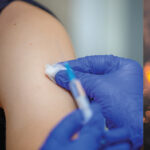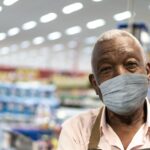Ready or Not 2021: Protecting the Public’s Health From Diseases, Disasters, and Bioterrorism
The Ready or Not report series provides an annual assessment of states’ level of readiness to respond to public health emergencies. It recommends policy actions to ensure that everyone’s health is protected during such events. This 2021 edition tiers states into three performance categories – high, middle and low - and includes action steps states should take to improve their readiness while battling COVID-19 and for the next health emergency.
March 10, 2021
The COVID-19 pandemic has starkly demonstrated that underinvestment in public health emergency preparedness can cost hundreds of thousands of lives and wreak havoc on the economy. This report, Ready or Not 2021: Protecting the Public’s Health Against Diseases, Disasters and Bioterrorism measured states’ performance on 10 key emergency preparedness indicators placing 20 states and the District of Columbia in a high level of preparedness tier, 15 states in a middle preparation tier and 15 states in a low degree of preparation tier. The report analysis found room for improvement in every jurisdiction.
State performance, by scoring tier, 2020
| Performance Tier | States | Number of States |
| High Tier | CO, CT, DC, DE, GA, ID, KS, MA, MD, ME, MS, NC, NE, NM, OK, RI, UT, VA, VT, WA, WI | 20 states and DC |
| Middle Tier | AL, CA, FL, IA, IL, KY, LA, MI, MN, MT, ND, NJ, OR, TN, TX | 15 states |
| Low Tier | AK, AR, AZ, HI, IN, MO, NH, NV, NY, OH, PA, SC, SD, WV, WY | 15 states |
“The importance of this report is that it gives states actionable data to adopt policies that save lives. The COVID-19 crisis shows that we have much more work to do to protect Americans from health threats, particularly in the ways in which structural racism create and exacerbate health risks within communities of color. States need to take aggressive steps to shore up their preparedness for all types of public health emergencies.”
John Auerbach, President and CEO of Trust for America’s Health
While the report’s findings are not a measure of any state’s COVID-19 response, they demonstrate that while states’ readiness is important, national health emergencies on the scale of a pandemic require strong federal leadership and coordination, and long-term investment in public health infrastructure and workforce. States alone, even those that rank high in this report, are not sufficiently equipped to respond to a pandemic without federal help.
The report found:
A majority of states have made preparations to expand healthcare and public health capabilities in an emergency, often through collaboration. Thirty-four states participated in the Nurse Licensure Compact, up from 26 in 2017. The compact allows registered nurses and licensed practical or vocational nurses to practice in multiple jurisdictions with a single license. In an emergency, this enables health officials to quickly increase their staffing levels.
Hospitals in most states have a high degree of participation in healthcare coalitions. On average, 89 percent of hospitals were in a coalition and 17 states and the District of Columbia had universal participation, meaning every hospital in the jurisdiction was part of a coalition. Such coalitions bring hospitals and other healthcare facilities together with emergency management and public health officials to plan for and respond to incidents.
Every state and the District of Columbia had public health laboratories that had plans for a large influx of testing needs. This ability to surge laboratory testing capacity during the COVID-19 crisis was extremely critical.
Most states are accredited in the areas of public health, emergency management, or both. As of December 2020, the Public Health Accreditation Board (PHAB) or the Emergency Management Accreditation Program (EMAP) accredited 42 states and the District of Columbia; 29 states and the District of Columbia were accredited by both groups, a net increase of one since November 2019. Both programs help ensure that necessary emergency preparation and response systems are in place and staffed by qualified personnel.
Seasonal flu vaccination rates, while still too low, have risen significantly. The seasonal flu vaccination rate among Americans ages 6 months or older rose from 42 percent during the 2017–2018 season to 52 percent during the 2019–2020 season but is still below the 70 percent target vaccination rate set by Healthy People 2030.
In 2019, only 55 percent of employed state residents, on average, used paid time off, the same percentage as in 2018. Those without paid leave are more likely to work when they are sick and risk spreading infection. This became particularly relevant during the COVID-19 pandemic, as isolation and quarantine are important tools for controlling the outbreak.
Most residents who got their household water through a community water system had access to safe water. On average, just 5 percent of state residents used a community water system in 2019 that did not meet all applicable health-based standards.
The report includes recommendations for actions by federal and state policymakers to improve the nation’s public health emergency preparedness in seven priority areas:
- Provide stable, sufficient funding for domestic and global public health security.
- Strengthen policies and systems to prevent and respond to outbreaks and pandemics.
- Build resilient communities and promote health equity generally and in preparedness.
- Ensure effective public health leadership, coordination, and workforce.
- Accelerate development and distribution, including last mile distribution, of medical countermeasures.
- Strengthen the healthcare system’s ability to respond and recover during and from health emergencies.
- Prepare for environmental threats and extreme weather.
The Ready or Not report series is funded by the Robert Wood Johnson Foundation with additional support from The California Endowment, W.K. Kellogg Foundation and The Kresge Foundation.
Read the full Ready or Not Report

